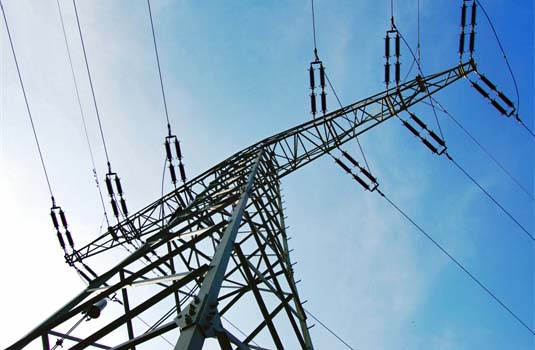|
 Statistics reveal that the nationwide electricity consumption in the U.S. doubled from 8 percent to 16 percent in three decades spanning 1970 to 2000. In the next three decades, demand for electricity across the country is expected to grow at a conservative estimate of 40 percent. Statistics reveal that the nationwide electricity consumption in the U.S. doubled from 8 percent to 16 percent in three decades spanning 1970 to 2000. In the next three decades, demand for electricity across the country is expected to grow at a conservative estimate of 40 percent.
This implies an additional required capacity of 258 GW. The country’s electric transmission grid currently consists of 160,000 miles of high-voltage transmission lines. Forecasts reveal that an additional 12,900 miles of high voltage wire will be required by 2015 to provide for the increasing demand for electric power in the nation.
In 2007, the total electricity consumed was about 3,925bn kilowatt-hours (kWh) at the rate of about 10.75bn kWh per day. In the same period, the amount of electric power generated was about 4,157.2bn kWh of which 48.6 percent was procured from coal-fired power plants.
Natural-gas fired plants accounted for 21.5 percent, nuclear plants for 19.4 percent, hydroelectric plants for 6 percent, petroleum-fired plants for 1.6 percent, and the remainder originated from renewable sources, primarily biomass, but also included geothermal, solar and wind.
In the midst of this analysis, it is also interesting to note that the U.S. electricity sector is the source of 40 percent of the nation’s emissions of carbon dioxide, which is roughly 10 percent of the world’s emissions.
This paves the path for increased capital expenditure not only to address the pressing needs for additional capacity, but also to ensure regulatory compliance in the face of serious environmental concerns.
Structure of the National Power Grid
The national power grid is made up of three independent grids – the Western Interconnection, the Eastern Interconnection, and the Electric Reliability Council of Texas (ERCOT) Interconnection. High-voltage electrical transmission occurs at 230kV, 345 kV, 500kV, and 765kV. These grids are connected in a few places by means of high-voltage direct current lines. The national power grid also provides interconnectivity between individual power utilities, except at those in the states of Alaska and Hawaii.
Transmission and distribution of power is managed by control centers, which monitor the utility’s generating plants, transmission, sub-transmission and distribution systems, and customer loads. The transmission system is a 100-year old amalgamation of local utilities. The Western and Eastern Interconnections together have about 140 control centers and 3,000 utilities, whereas ERCOT operates as a single power system and not as a network of utility companies.
Advantages and Limitations of the Grid Infrastructure
Grid linkages allow electricity generated in one area to be shared with another, thereby enhancing the ability of each utility to address local power outages by drawing energy from a linking one. In return, each utility that agrees to share is allowed increased reserve capacity and use of larger and more efficient generators.
On the downside, this large and diverse network needs to grapple with complexities that arise on account of inter-operations between elements controlled by diverse groups. While extensive interconnectivity in this system allows power to be transmitted over long distances, there is always the threat of local disturbances propagating across the grid and causing widespread failure.
One such was observed during a major breakdown in November 1965 in the eastern part of the nation. This catastrophe enveloped an area of more than 80,000 square miles, from New York to Massachusetts, merely on account of the failure of an automatic control device in Queenston, Ontario. A similarly massive failure occurred in the U.S. and Canada in August 2003, when a loss of 61,800 MW of electrical power resulted in a severe blackout in an area covering 50 million people.
Initiatives in the U.S. Power Sector
A recent report by the U.S. Department of Energy (DoE) emphasizes the importance of the transmission system as ‘an interstate highway system for wholesale electricity commerce’. The last decade has seen efforts by the government to provide electrical power at low costs to consumers by propelling investments in power generation and attempting to increase operational efficiencies.
There is enhanced focus on elimination of daily transmission bottlenecks by modernization, adoption of advanced technologies and efficient operating practices, and location of generation points in closer proximity to areas of demand.
 The Office of Electricity Delivery and Energy Reliability aims to resort to high temperature superconducting (HTS) power cables, transformers, generators and motors to reduce energy losses in power line transmission. The consequent improvement in energy efficiency of electric transmission and distribution is seen as a key mechanism for reducing greenhouse gas (GHG) emissions. The Office of Electricity Delivery and Energy Reliability aims to resort to high temperature superconducting (HTS) power cables, transformers, generators and motors to reduce energy losses in power line transmission. The consequent improvement in energy efficiency of electric transmission and distribution is seen as a key mechanism for reducing greenhouse gas (GHG) emissions.
Integration of renewable energy into a distributed energy generation and storage system is another technique that is being used to reduce demand, relieve transmission congestion, reduce thermal loadings and energy losses during peak hours, again with an objective of increasing efficiency and decreasing GHG emissions.
Another important initiative is the ‘Smart Grid’ plan of integrating intelligent communications networks with the power grid to enable real-time monitoring of the grid, allowing for manual or automatic intervention, whenever required, to maintain smooth operations. The Energy Policy Act of 2005 aims to encourage investment in all sectors of the energy industry, including the electric power market. It is estimated that approximately US$ 100bn will be spent over the next decade to implement the Smart Grid project.
The National Academy of Engineering has hailed the U.S. power grid as a ‘supreme engineering achievement of the 20th century’. The key challenge for the power sector is to invest heavily in the modernization of a century-old legacy system in an attempt to keep up with the soaring demands. Simultaneous care should be taken to prevent any concurrent hikes in costs. Also, any improvements should address increasingly stringent regulations pertaining to environmental concerns.
The need of the hour is to create an electric superhighway that can keep pace with the nation’s information highway. In view of the rapid advances being made in the digital information and telecommunications network, this will indeed be a substantial undertaking.
|